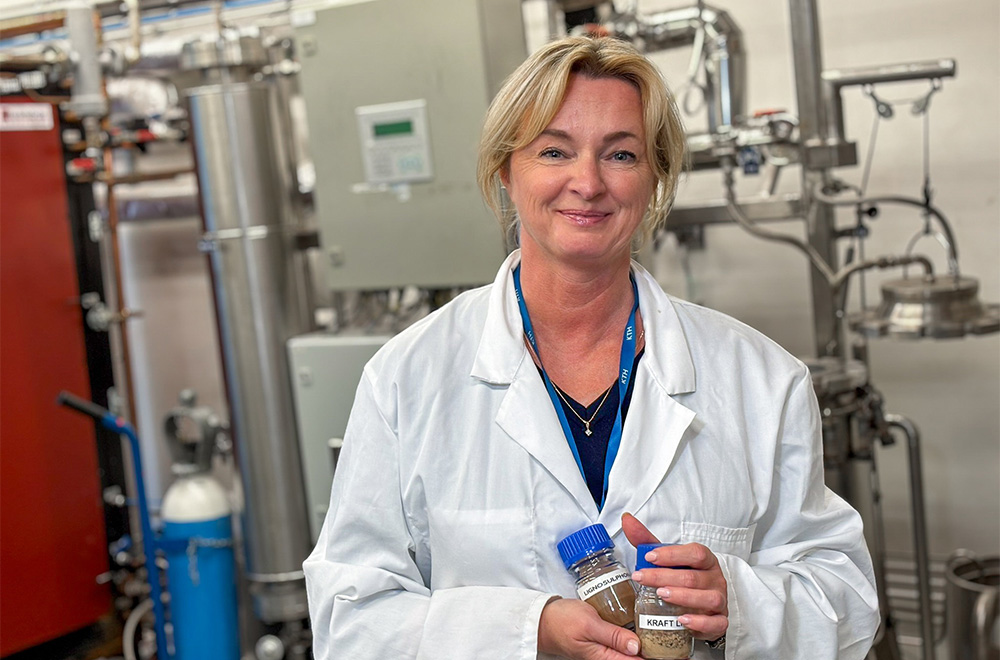Award goes toward study of wood-derived lignin for eco-friendly sunscreen

KTH researcher Olena Sevastyanova believes that trees and plants can serve as a source for sunscreen – an idea she is researching with a recent grant of 700,000 Swedish crowns.
Sevastyanova’s research focuses on lignin — a complex organic polymer that is formed in plants. Lignin gives wood its strength and structure. In pulp and paper production, it is typically removed and treated as a byproduct, often burned to generate energy for industrial processes.
“I hope to develop safe and effective lignin-based sun care products and gain deeper insight into how lignin behaves in cosmetic formulations,” Sevastyanova says. Her continued research will be supported by funds awarded to her as recipient of the Gunnar Sundblad Research Foundation’s Competence Development Prize.
Olena Sevastyanova has been working with lignin for more than 15 years and knows its properties well.
“Lignin naturally absorbs UV light,” she says. “Normally, it’s not water-soluble and requires organic solvents, but in nanoparticle form it can form stable water suspensions. This makes it easier to use in creams, where it also helps stabilize emulsions while retaining its UV-protective properties.”
Fossil-free alternative
After gaining more control over the preparation of lignin nanoparticles, Sevastyanova turned to exploring their use in cosmetics. A sunscreen made from renewable resources would address both environmental and industrial challenges.
“It offers a fossil-free alternative to conventional UV filters, many of which raise health and environmental concerns. At the same time, it opens new, higher-value uses for lignin – supporting green innovation and the transition to a more sustainable and circular bio-economy,” she says.
Sevastyanova was inspired by colleagues in Europe who are studying similar applications. Through collaboration, especially with Polish partners, she has been able to start testing real formulations.
“While some startups are already exploring this area, more research is needed to improve performance and ensure safety. I plan to build on my long-standing experience in lignin chemistry to create a strong scientific foundation for future applications,” she says.
Text: Jon Lindhe ( jlindhe@kth.se )
